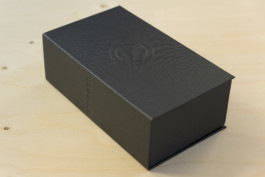
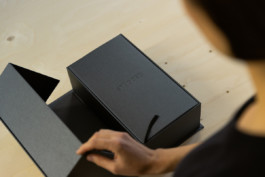
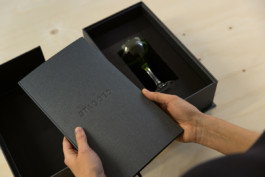
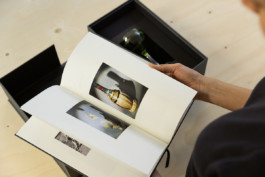

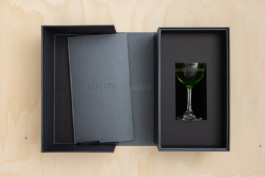
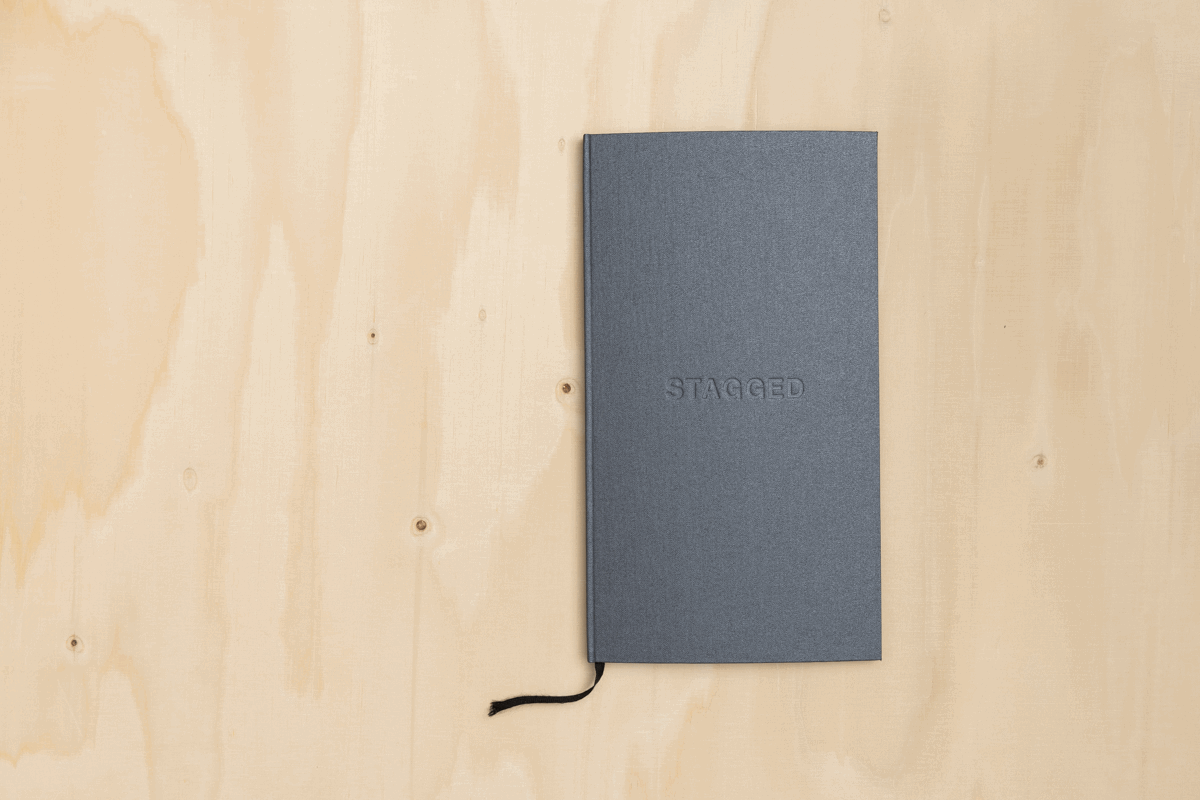
STAGGED
Artist Book. Short Story and Engraved Uranium Wine Glass in Handmade Box Set
Edition of 6
2021
On December 1st, 1942, physicist Eugene Wigner walks into a Chicago liquor store to purchase a bottle of Bertolli-brand chianti, imported from Italy. He plans to open the bottle to celebrate the world’s first controlled nuclear reaction, taking place the following day underneath the bleachers of Stagg Field, the University of Chicago’s football team.
Staging this experiment amidst a densely populated area in the heart of the—at the time—second largest city of the United States is an admittedly audacious act. Wigner is part of a team of scientists to conduct the experiment which is to be the inception of the nuclear age and the direct enabler of the utter destruction of the cities of Hiroshima and Nagasaki a handful of years later, as well as decades of both cheap energy and constant fear of total nuclear war.
The short story spins a speculative narrative about a moment of forking realities. Only in one of the branches—that is the branch most of us are familiar with, presumably—the above-mentioned experiment succeeds.
The engraving on the uranium wineglass reads:
“The shadow of this glass may eventually etch itself into the fabric of space and time.”
Book- and boxbinding: Markus Rottmann, Maika Saworski, Till Wittwer
Copy editing: Ross Ludlam
Documentation photography: Andre Germar
Published with META COPY. Zentrale für Künstlerpublikationen Hannover (Isabel Nuño de Buen & Nico Pachali)








STAGGED
Artist Book. Short Story and Engraved Uranium Wine Glass in Handmade Box Set
Edition of 6
2021
On December 1st, 1942, physicist Eugene Wigner walks into a Chicago liquor store to purchase a bottle of Bertolli-brand chianti, imported from Italy. He plans to open the bottle to celebrate the world’s first controlled nuclear reaction, taking place the following day underneath the bleachers of Stagg Field, the University of Chicago’s football team.
Staging this experiment amidst a densely populated area in the heart of the—at the time—second largest city of the United States is an admittedly audacious act. Wigner is part of a team of scientists to conduct the experiment which is to be the inception of the nuclear age and the direct enabler of the utter destruction of the cities of Hiroshima and Nagasaki a handful of years later, as well as decades of both cheap energy and constant fear of total nuclear war.
The short story spins a speculative narrative about a moment of forking realities. Only in one of the branches—that is the branch most of us are familiar with, presumably—the above-mentioned experiment succeeds.
The engraving on the uranium wineglass reads:
“The shadow of this glass may eventually etch itself into the fabric of space and time.”
Book- and boxbinding: Markus Rottmann, Maika Saworski, Till Wittwer
Copy editing: Ross Ludlam
Documentation photography: Andre Germar
Published with META COPY. Zentrale für Künstlerpublikationen Hannover (Isabel Nuño de Buen & Nico Pachali)
